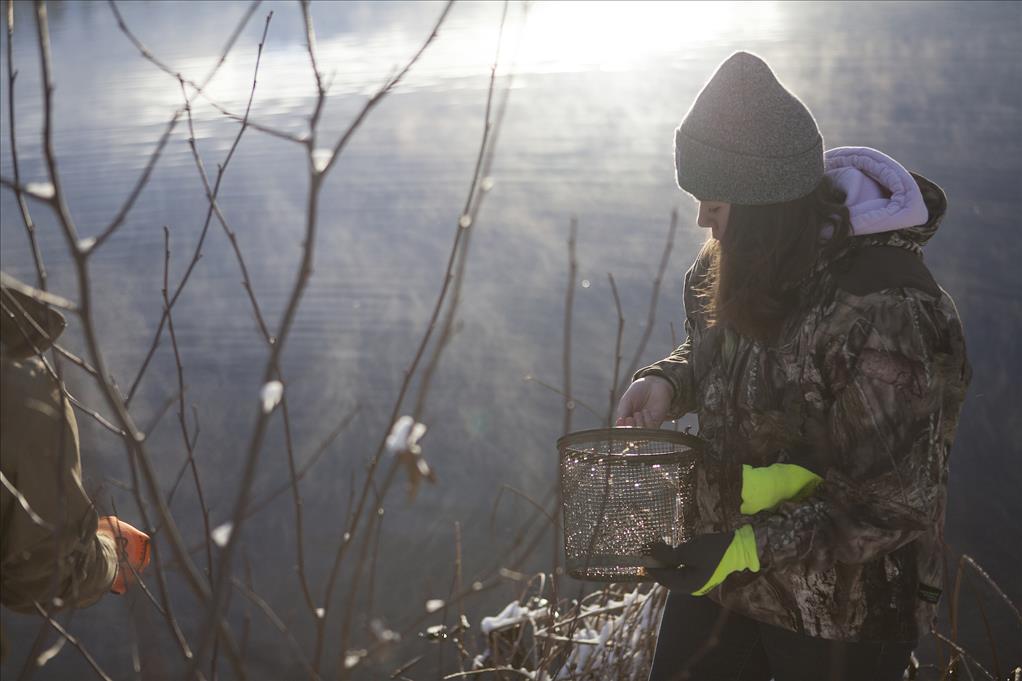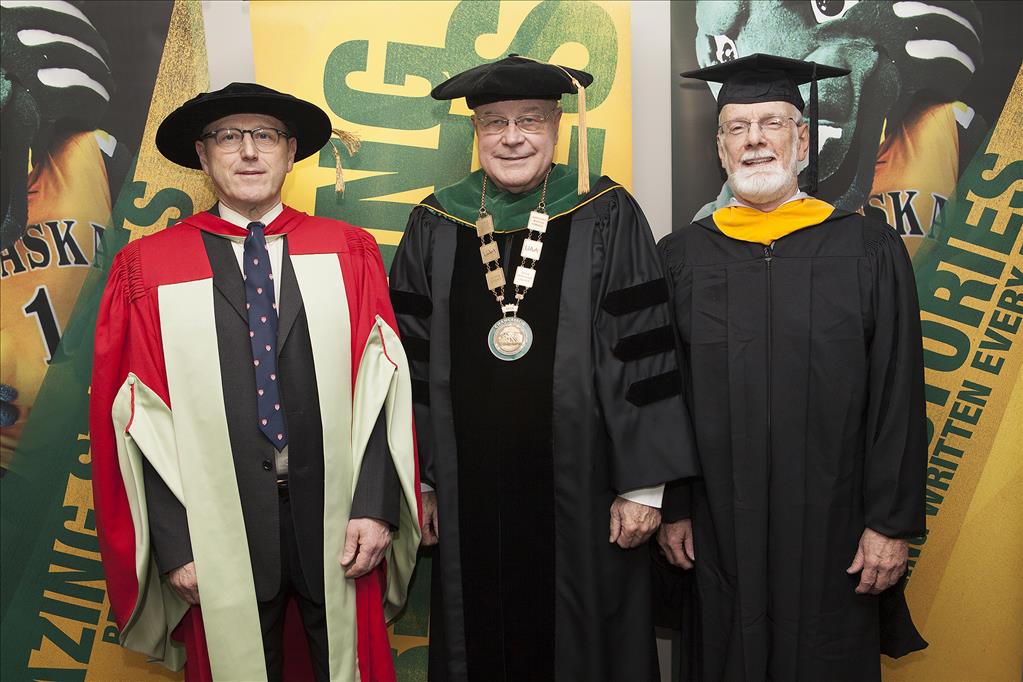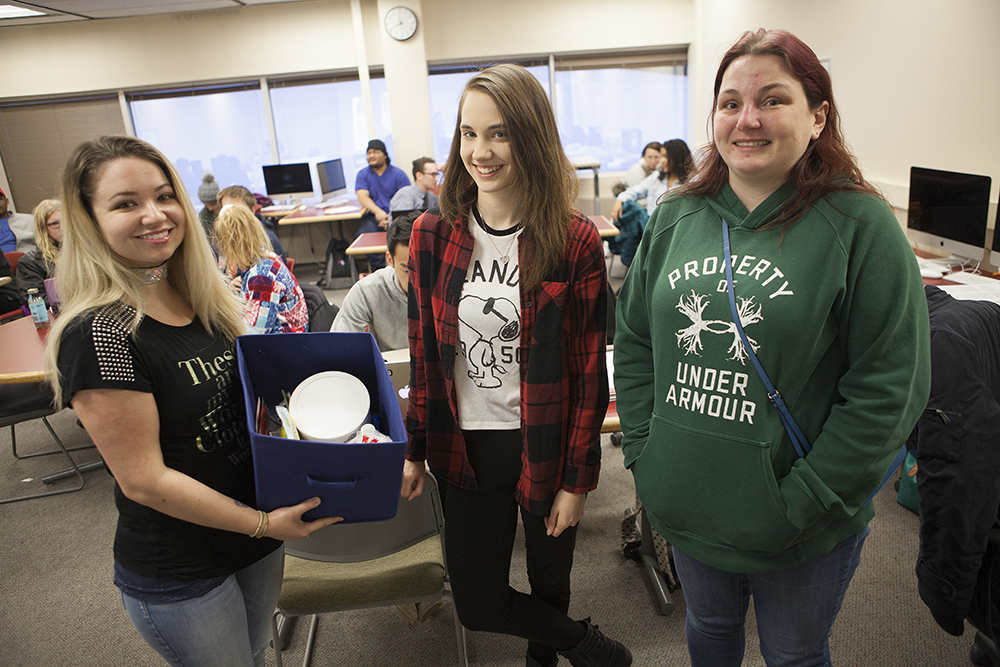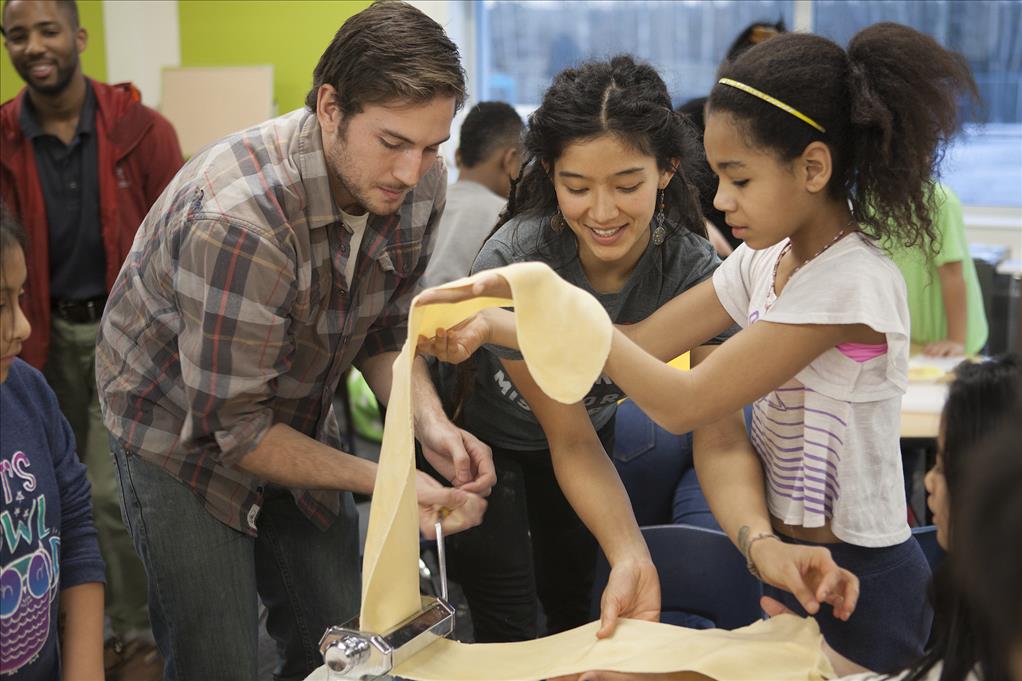Cow hearts, faux feces engage mini med schoolers
by Tracy Kalytiak |
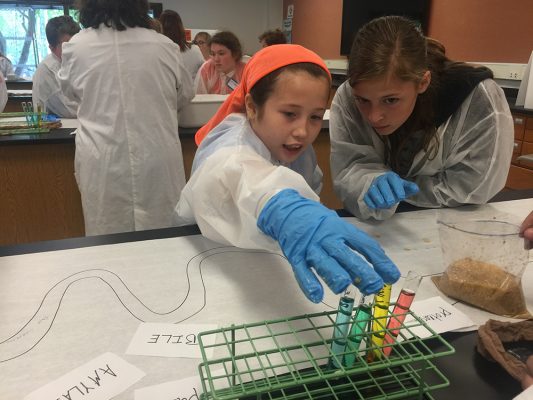
Randi Bunsen-Riffle, 11, left, and Mat-Su College student worker Kira Singleton take part in a simulated digestive system experiment during the campus' recent mini med school summer camp. Randi is reaching for "enzymes" to add to a plastic bag "stomach" full of crushed food and liquid (right). (Photo by Tracy Kalytiak / University of Alaska Anchorage)
What do jelly beans, plaster of Paris and cow hearts have in common?
They all helped summer day-campers learn the basics of anatomy and physiology at Mat-Su College's recent week-long "Mini Med School" summer camp.
One of the 23 campers, Annika Gagnon, 13, first became interested in anatomy a decade ago, when her father came home from his medical residency.
"I'd sit on his lap and he'd tell me all about it," she said. "I found the heart dissection interesting, partly because I didn't know what animal it was-I thought it was a cow because of its size. When you cut into it, you could find all these different tubes, which were arteries. My [lab] partner found a way to loop a string all the way through the heart, which I found really cool."
'A good fit'
One of two $4,000 donations funding mini med school and the other Mat-Su College science camps (including CSI, biology exploration and summer engineering academies) came from the family of LeRoy Johnson, a Palmer businessman and founder of Johnson Fuel who died in July at the age of 93. The Johnson family's other donation supported the 2016 Machetanz Art Festival.
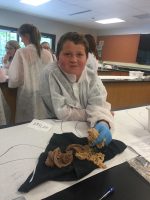
Remmington Mothershead, 11, took part in the recent mini med school summer camp at Mat-Su College.
In addition, parents paid $159 to enroll their middle-school-aged kids in the five-half-days camp, held at the MSC campus. Scholarships based on financial need are available.
Lucy Klebesadel enrolled one of her two daughters, Dani, 13, in mini med school, because Dani is interested in engineering and forensics.
"I've known Mat-Su College offers camps because of CSI (another Mat-Su College camp)," said Klebesadel, who lives in the Palmer area. "I hauled my girls to Anchorage for two years; last year I was looking for camps that were closer. This year when I saw mini med school at MSC, I asked Dani if she wanted to do it or CSI. Dani asked what mini med school was, we read the synopsis and she said yes! The camp was a good fit for Dani because she excels at both science and math and loves NCIS' "Miss Abby" [character] and Forensic Files."
"This is great," said Teri Haddeland, mother of camper Hana Haddeland, 11. "We don't get enough science at school. This is so cool, especially for girls."
Kathleen Nevis, an assistant professor of biology at Mat-Su College and director of mini med school and the other science summer camps, has long been interested in science outreach and volunteered with an open-access journal, Journal of Emerging Investigators, that publishes science articles from middle- and high-school students.
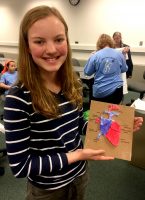
Annika Gagnon, 13, a camper at Mat-Su College's mini med school, displays a clay heart she made.
"When I moved to Alaska two years ago, I had a desire to continue my involvement in science outreach and share my passion for science," Nevis said. "My ultimate goal is to get kids excited about exploration and teach them that being inquisitive is a good thing."
The activities Nevis offers come from a variety of sources, including online education sites, conversations with directors of the Boston Museum of Science and other camps and activities she developed herself.
The first phase of mini med school, Nevis said, involves examining the skeletal, cardiac and digestive systems.
In a module dealing with the skeletal system, for example, campers rotate through three stations in which they must place tags on the appropriate bones of a skeleton; use sponges and plaster of Paris to build bones of differing strengths before using water weights to test the integrity of those bones; and learn how radiologists examine X-rays and see what different types of bone-breaks look like.
"Each camper only spends 25 minutes at each station and moves to the next," Nevis said. "The kids are always excited about the dissections in the mini med camps."
Tabletop digestion
They also seemed thrilled to learn about what happens after they eat-on the final day of mini med school, campers participated in a digestive system demonstration extending the entire length of their lab tables.
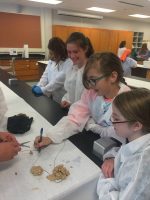
Presley Allen labels the output of her group's digestion demonstration. Also in the photo are, from left, camp counselor Kira Singleton, Kaylen Koecher and Hana Miles.
First, they used scissors-representing their teeth-to cut a sandwich into bite-size pieces, and placed the pieces into a small dish representing their mouth. Then, they poured in water ("saliva"), and some milk before mashing together the food and drink, as molars would.
The campers emptied the sandwich-and-milk slurry into a quart-size plastic bag "stomach", added colored "enzymes" from test tubes-representing HCL, lipase, bile and amylase, which are needed to break down different food particles-and used their hands to palpate the bag just as the muscles in the wall of the stomach churn food.
They poured the slurry into a nylon stocking and squealed as liquid leaked through the material-representing nutrients the body removes from food in the small intestine. Each camper took a turn squeezing liquid out of the stocking-representing the way the body's large intestine absorbs water from the slurry-until a final squeeze pressed out a cylinder of dried-out food remnants-"Poop," one camper said, with an awed expression.
'I want to come back'
Mini med school campers also learned in a hand's-on way about the body's other systems by:
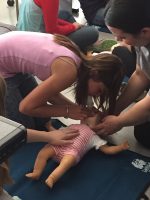
A camper at Mat-Su College's mini med school learns how to perform CPR, using an infant mannequin. (Photo courtesy of Kathleen Nevis / Mat-Su College)
- Using jelly beans to better understand the connection between smell and taste.
- Creating clay hearts to learn how blood flows through and heart and gets infused with oxygen.
- Using letter and "blind-spot" eye tests and a test related to astigmatism.
- Painting T-shirts with depictions of the digestive system.
- Learning (through Mat-Su College's paramedic program) about adult and infant CPR.
- Making double-helix molecules out of beads on "DNA Day."
"It has four different-colored beads in the middle of it," said Willow Vialpando, 13, "and you would put two big beads on and then you twist it and you put four small beads and then you just keep going. You twist it around a pin and it makes a double helix."
Willow says she had fun at mini med school.
"I want to come back next year," she said. "Ever since this camp, I want to become a paramedic. I really like it."
Written by Tracy Kalytiak, UAA Office of University Advancement
 "Cow hearts, faux feces engage mini med schoolers" is licensed under a Creative Commons Attribution-NonCommercial 4.0 International License.
"Cow hearts, faux feces engage mini med schoolers" is licensed under a Creative Commons Attribution-NonCommercial 4.0 International License.










